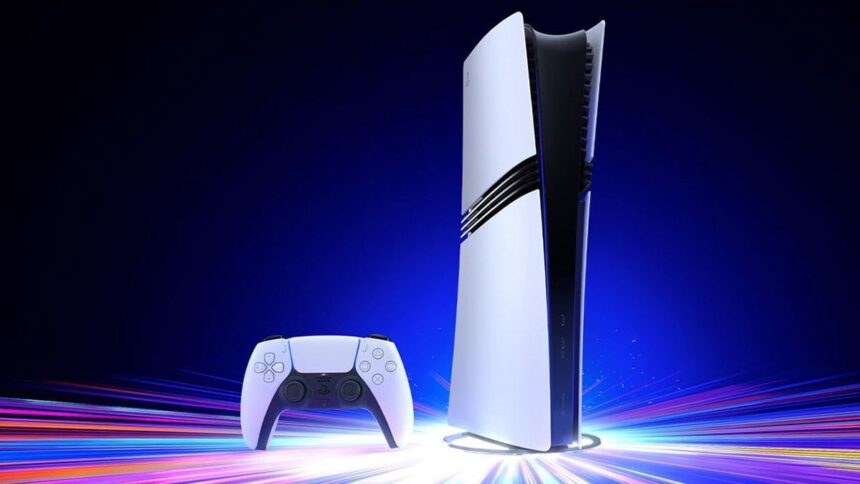The PS5 Pro, set for release in November 2024, is an upgraded version of the original PlayStation 5, which debuted in 2020. But what are the real differences between the two models?
Sony has revealed that the PS5 Pro boasts more processing power, custom image upscaling technology, and a massive boost in ray tracing capabilities—up to three times more than the standard PS5.
But how did Sony manage to achieve this? What upgrades made the PS5 Pro up to 45% more powerful than its predecessor?
Here’s a breakdown of the PS5 Pro’s technical upgrades and what they mean for your gaming experience.
| Comparison: PlayStation 5 Pro x PlayStation 5 x Xbox Series | |||
| PS5 Pro | PS5 | Xbox Series X | |
| CPU | Viola | Obreon | Scarlett |
| Architecture | AMD Zen2 8-core | AMD Zen2 8-core | AMD Zen2 8-core |
| Lithograph | TSMC’s 4nm | TSMC’s 7nm | TSMC’s 7nm |
| Size of the die | N/A | 308mm² | 360.5mm² |
| CPU Clock | Up to 3.85 GHz | Up to 3.55 GHz | Up to 3.8 GHz |
| NPU | XDNA 2 | No | No |
| GPU | RDNA 3 and RDNA 4 | RDNA 2 | RDNA 2 |
| Computational units | 60 | 36 | 52 |
| GPU Clock | N/A | Up to 2.23 GHz | Up to 1.82 GHz |
| GPU Performance | N/A | Up to 10.3 TFLOPs | Up to 12.1 TFLOPs |
| RAM Memory | 16GB GDDR6 | 16GB GDDR6 | 16GB GDDR6 |
| Memory bus | 256-bit | 256-bit | 320-bit |
| Bandwidth | 576 GB/s | 448 GB/s | 560 GB/s |
| Memory speed | 18,000 MT/s | 14,000 MT/s | 14,000 MT/s |
| Storage | 2TB NVMe | 825GB NVMe | 1TB NVMe |
| Storage expansion | NVMe SSD | NVMe SSD | Up to 1TB with a proprietary card |
| Launch price | US$ 700 | US$399 (Slim) to US$499 (Fat) | US$ 499 |
| Launch | November 7, 2024 | November 12, 2020 | November 10, 2020 |
PS5 Pro’s new SoC
The PS5 Pro features a new custom SoC developed by AMD in collaboration with Sony, Viola. While it still retains 8 cores and 16 threads based on the Zen 2 architecture—just like the original PS5—it’s now built on an upgraded 4nm process instead of the 7nm used in the older Obreon chip.
This smaller, more advanced lithography allows the CPU to perform better while consuming less power, making it more efficient. As a result, the PS5 Pro operates at a higher clock speed of 3.85 GHz compared to the 3.55 GHz of the standard model, offering a 300 MHz boost.
In practical terms, this higher clock speed means the PS5 Pro can handle more complex calculations with greater speed, which is especially important for rendering intricate particle effects, textures like fire and water, and advanced lighting systems.
PS5 Pro GPU is bigger and more powerful
The GPU in the PS5 Pro has seen the most significant upgrade compared to the original PlayStation 5. The previous PS5 used a relatively modest graphics card with 36 compute units (CUs) based on the older RDNA 2 architecture, which lacked support for a Neural Processing Unit (NPU) crucial for AI tasks.
In the PS5 Pro, Sony has increased the number of CUs to 60 (a 67% boost) and integrated both RDNA 3 and RDNA 4 architectures into a single graphics chip. RDNA 3 handles rasterization and the core graphical rendering, while RDNA 4 powers the new dedicated ray tracing accelerators. This combination results in up to 45% faster overall rendering performance and up to 3x better ray tracing capabilities than the original PS5.
Additionally, the new GPU includes the XDNA 2 NPU, the same AI-driven unit found in AMD’s latest Strix Point processors. This enables the PS5 Pro to feature PlayStation Spectral Super Resolution (PSSR), Sony’s proprietary upscaling system akin to NVIDIA’s DLSS, enhancing graphics through AI.
In practical terms, these upgrades ensure smoother gameplay with 4K resolution at 60 FPS, eliminating players needing to toggle between fidelity and performance modes in games that carry the “PS5 Pro Enhanced” label.
Improved RAM on PS5 Pro
Rendering high-resolution graphics, handling AI tasks, and loading massive textures in real-time demand tremendous speed from any computer system. One of the key components that bears the brunt of this process is the RAM.
The original PlayStation 5 comes with 16 GB of GDDR6 memory, running at 14,000 MT/s and offering a bandwidth of 448 GB/s. While this was sufficient for its initial performance, it falls short of the enhanced 4K, 60 FPS experience the PS5 Pro aims to deliver. To address this, Sony upgraded the PS5 Pro’s RAM, boosting its speed by 28% to 18,000 MT/s and increasing its bandwidth to 576 GB/s.
To visualize the improvement, think of the memory bandwidth as a road. In the original PS5, the “road” is narrower, allowing a limited number of cars (data) to pass at a slower speed (14,000 MT/s). With the PS5 Pro, the road has been widened, allowing more cars to pass faster (18,000 MT/s).
For a gaming system handling large, complex data—like 4K textures—upgraded RAM specifications are crucial to prevent data bottlenecks and ensure smoother, faster performance overall.
Faster downloads on PS5 Pro
A noteworthy update to the PS5 Pro, which wasn’t highlighted during its official unveiling, is its native support for Wi-Fi 7. This next-gen wireless connectivity standard introduces powerful features like 16×16 MU-MIMO, Multi-Link Operation technology, and 4K-QAM. These enhancements promise greater network stability and significantly faster download speeds, making a real difference for gamers who rely on strong, low-latency connections, especially in competitive online gaming.
This represents a significant leap over the Wi-Fi 6 standard found in the original PS5. While Wi-Fi 6 brought improvements, it doesn’t quite offer the performance needed for the most demanding multiplayer experiences that gamers crave today.
Additionally, with the PS5 Pro lacking a version with a native disc drive, this move signals Sony’s commitment to an all-digital future for gaming. As more players embrace digital downloads over physical media, these upgrades in wireless technology align with the industry’s shift toward digital game distribution.
More storage on PS5 Pro
Sony’s commitment to digital game distribution is further underscored by the PS5 Pro’s expanded internal storage.
While the original PlayStation 5, released in 2020, came equipped with a high-speed SSD of 825 GB, many users needed to upgrade to accommodate their growing game libraries. The 2023 revision, the PS5 Slim, improved on this with a 1 TB SSD.
However, the PS5 Pro significantly leaps forward by offering 2 TB of high-performance SSD storage. This upgrade reflects the increasing size of modern games and the shift towards digital downloads, providing ample space for a robust game collection without needing external drives.
Market analysts have noted that this substantial storage increase contributes to the higher price point of the PS5 Pro. With pre-orders starting on September 26 and the console set to release on November 7, 2024, the PS5 Pro will be available in the US for a suggested retail price of $699.99.











